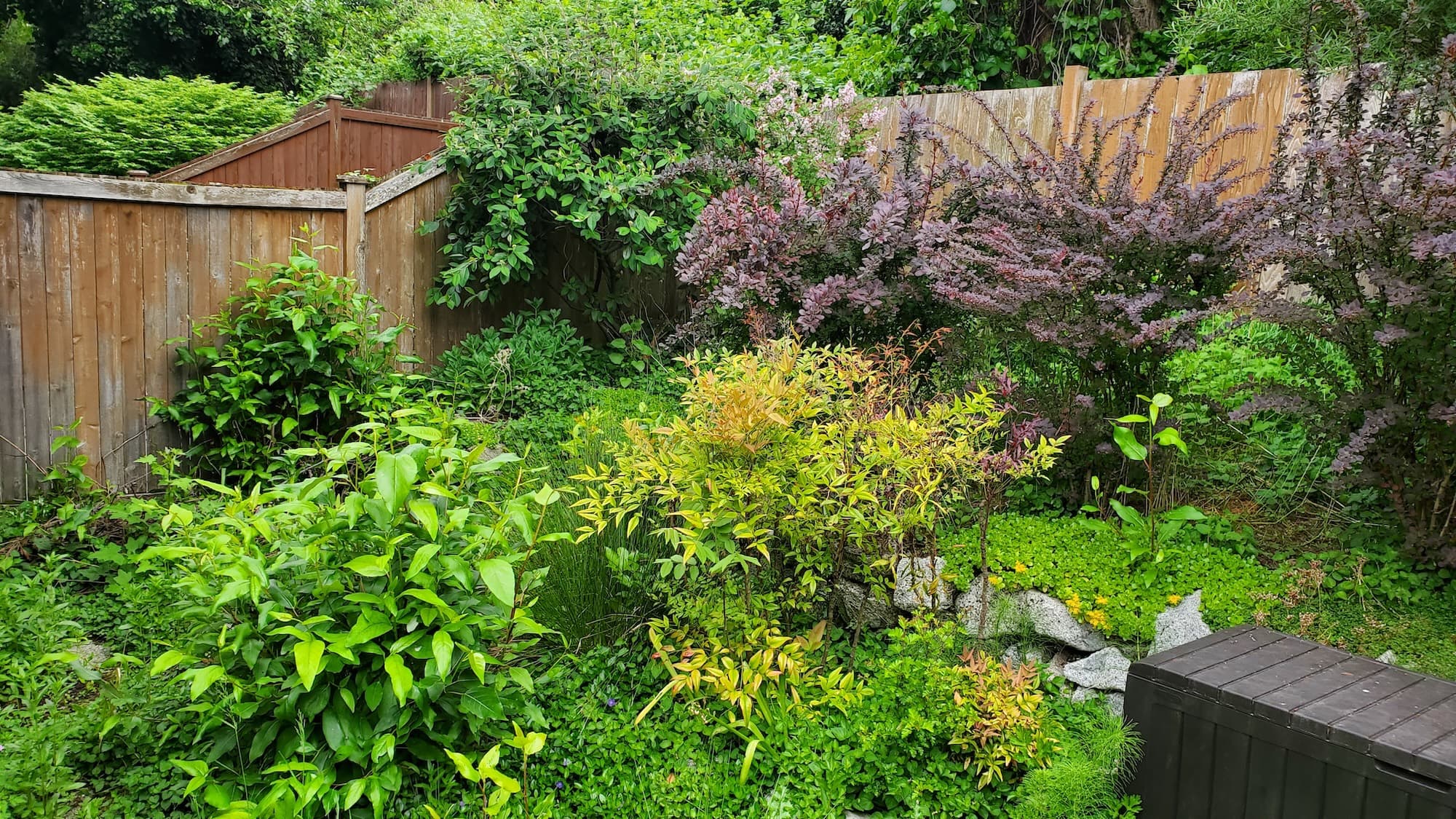Weeding Weed-whack Vacant Lots
Homeowner’s Issue
Weeding yards and vacant lots in our region face a particular set of challenges. Heavy winter rainfall, compacted urban soils, and shady pockets promote moss and invasive weeds, while sunnier slopes burn out groundcover in summer. Poor drainage on hills and between concrete edges creates muddy patches that choke desirable plants and become breeding grounds for knotweed, blackberry, and stitchwort. Many homeowners also struggle with curb appeal rules from HOAs and city inspections in nearby White Center and Highland Park, where properties are highly visible from sidewalks and alleys.
Typical problems include steep, erosion-prone banks, mixed sun/shade microclimates, and a mosaic of soil types left from previous fill or construction. These conditions mean hand and string trimming done on schedule is more effective than one-off chemical fixes — especially when you want to avoid herbicides. In Weeding, regular mechanical weed-whack visits combined with sustainable practices reduce re-growth, improve drainage lines, and keep properties tidy for tenants, neighbors, and inspections without harming nearby parks or waterways.
Our Quality Service
We handle vacant-lot weed-whacking with methods suited to local conditions. We start with a site assessment to note slopes, drainage paths, compacted soil, and shady versus sunny zones. On service day we use blended mechanical trimming, hand-pulling where needed, and selective edging to protect roots of desired plants. We do not use herbicides — only sustainable, organic tactics like targeted mulch and manual removal.
Local insight matters: we time work to avoid mud season, cut back invasive vines before seed set, and address slope drainage so erosion is minimized. Benefits include improved safety, better curb appeal for HOA or resale, lower ongoing maintenance, and longer-lasting results that respect local ecology.
What’s Included
- Initial property assessment and written estimate
- Mowing, string trimming, and hand weeding
- Edging along paths, sidewalks, and fences
- Debris pickup and removal (haul-away or green-bin options)
- Basic cleanup to leave property presentable for inspections
Options / Upgrades:
- Mulch + landscape fabric installation for suppression
- Organic, non-chemical weed control and manual root removal
- Haul-away of large debris vs. green bin composting
- Native planting or low-maintenance groundcovers for slopes
- Soil testing and light grading for improved drainage
Before & After / Expectations
Expect noise from gas or battery trimmers and some cut plant material left briefly while we bag or stage for removal. Access to the lot should be clear of parked vehicles and gates unlocked when possible. For steep or heavily overgrown lots we may need additional crew time and a haul-away trip.
Care tips for Weeding yards:
- Water new plantings early morning; avoid evening irrigation that encourages moss.
- Inspect and clear drainage channels after heavy rain.
- Pull small weeds by hand early in the season before they set seed.
- Keep ivy and blackberry cut back from property lines to prevent re-infestation.
FAQs
Q: How long until a lot looks “done”?
A: Most standard lots are tidy after one visit; heavy infestations may need follow-ups in 2–8 weeks.
Q: Do you use chemicals?
A: No. We use only sustainable, non-chemical methods and organic options on request.
Q: Will you haul debris away?
A: Yes — choose haul-away (dump fees apply) or green-bin composting where accepted.
Q: How often should I schedule visits?
A: For Weeding lots, bi-monthly or quarterly keeps growth manageable; monthly for high-visibility sites.
Call to Action
Weeding homeowners: book a free estimate and get fast scheduling from a local crew familiar with White Center and Highland Park conditions. We focus on reliable, sustainable results that improve curb appeal and reduce long-term maintenance.
Email: neatandtidyseattle@gmail.com
Licensed • Insured • Local expertise in SW Seattle lot care.










